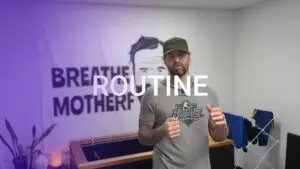
Layback & External Rotation Strength
Your arm acts like a catapult when throwing a baseball and it’s in full external rotation when the catapult is cocked all the way back.
Baseball presents many psychological challenges but none are more difficult than Process v Result. Process is what you can control. Process begins long before you take the mound or step into the box. It’s earned through hours of hard work in the cage and the weight room. It’s the confidence in knowing that you’ve done absolutely everything you can do to prepare yourself for the season.
Process is also what you can control on the mound or in the box. It’s the ability to calm yourself, center your focus, execute and repeat. It’s your ability to repeat pitches or take quality swings. You can control everything all the way up until the ball leaves your hand or the bat.
Results are what happens next, and, in baseball, results can be quite random. You might execute a terrible pitch, the batter hits a laser beam line drive but the ball happens to find one of your defenders for an out. Or you could throw a perfect pitch that’s absolutely unhittable, saw the hitter off but give up a broken bat bloop double.
It happens the best of us at all levels, even to Joe when he was pitching in the Major Leagues for 13 years.
But it’s up to you to focus on the process completely while letting go of the results. And that begins in the training facility months before you take the field. You focus on your next rep, bullpen pitch or plyo throw. And if you completely focus on the process, then the results usually follow.
And here’s where it gets really difficult. You may know that you pitched well because you controlled the process as best you could, but the results are bad. You have to choose to be pleased with that outing despite the scoreboard.
On the flip side, there might be a game where you execute the process poorly yet the results look good. Now you can let everyone else think you played well, but internally you know that you need to make adjustments to your process. Baseball, more than any other sport, presents this unique challenge. So let go of the results in a results drive game. Focus on the process and you’ll be a better player for it.

Your arm acts like a catapult when throwing a baseball and it’s in full external rotation when the catapult is cocked all the way back.

Joe Beimel pitched for 13 years in the Major Leagues and his career really took off, establishing him as a mainstay in The Show, when

We get a lot of questions about changing mechanics as if there’s some sort of secret mechanical adjustment that will unlock MLB-quality pitches. Same goes
